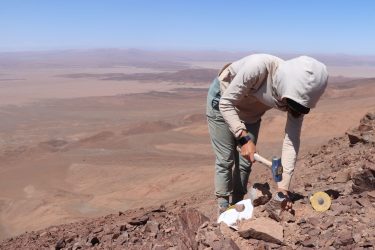
Unlike the Pacific Northwest, the Atacama Desert in Chile experiences very little rain. But the two regions are both seismically active. Faults in the Atacama Desert are slowly sliding past each other in a way similar to the Seattle Fault in Puget Sound and the San Andreas Fault in California. The Atacama Desert’s lack of rain makes it easier to see how those gradual movements shape the landscape over time.
Alison Duvall, a University of Washington associate professor of Earth and space sciences, and doctoral student Tamara Aránguiz-Rago will travel to Chile this month to study landscapes developed along these types of faults. Duvall has previously studied historic landslides at the site of the rainfall-triggered Oso mudslide and how rainfall, earthquake and landslide risks combine in Oregon.
UW News asked the two geophysicists about their upcoming trip as part of a new series, “In the Field,” highlighting UW field research.
Read more at UW News »
